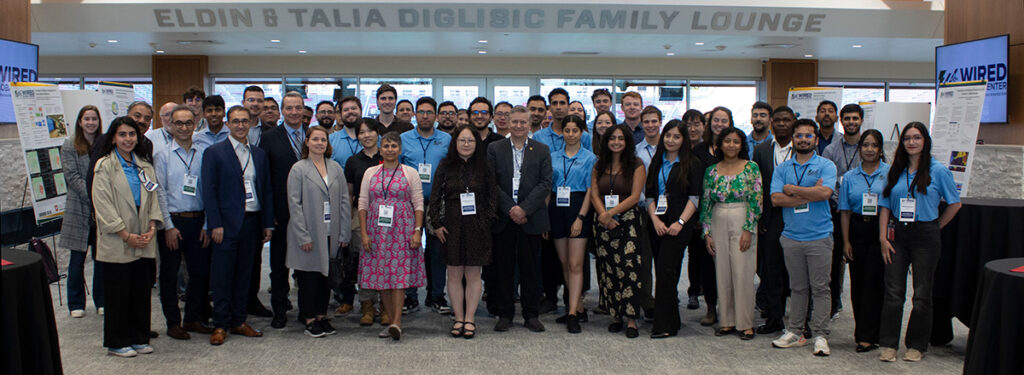In the wake of intensifying heat waves, wildfires and the long-reaching effects of climate change, the Western United States faces challenges to its electrical grid, the vast network of wires, generating stations and transformers that power the economy.
The U.S.-Canada Center on Climate-Resilient Western Interconnected Grid, co-led by the University of Utah, has sought to identify solutions for a mounting crisis that communities are not prepared for should the grid fail.
Bringing together a multitude of stakeholders, including 10 academic institutions, various federal and state agencies, industry leaders and community advocates to speak at the 2024 WIRED Grid Resilience Symposium on Sept. 12-13 at the U.

In the opening address, the new center’s co-directors Masood Parvania of the U and Hamid Zareipour of the University of Calgary, spoke about the challenges presented by extreme weather events.
“We have wildfires across the border, heat waves, and other problems that are considered extreme weather impacting the grid,” said Parvania, an associate professor of electrical and computer engineering. “Not only across the [grid] but also expanding beyond that.”
It is a pressing issue for a network that sprawls across 136,000 miles over 16 U.S. states and Canadian provinces, with heat waves rising threefold in the last 50 years, and wildfires burning more than 7 million acres in 2024 alone.
Further compounding this issue is the expansion of new technologies like AI data centers, manufacturing and expanding electrification as the economy moves away from fossil fuels—contributing to an estimated 15 to 20% increase in power demand. With a current peak demand of 168 gigawatts, according to Branden Sudduth, Vice President of Reliability Planning and Performance Analysis at the Western Electricity Coordinating Council, there is growing concern for the availability of energy resources. Weather events, such as storms and heat waves, reduce the overall efficiency and output of renewable resources, including wind and solar, causing what Sudduth describes as a “double squeeze.”
Continue reading Ethan Hood’s “Exploring solutions to the threat climate change poses to the West’s electrical grid” on @theU.